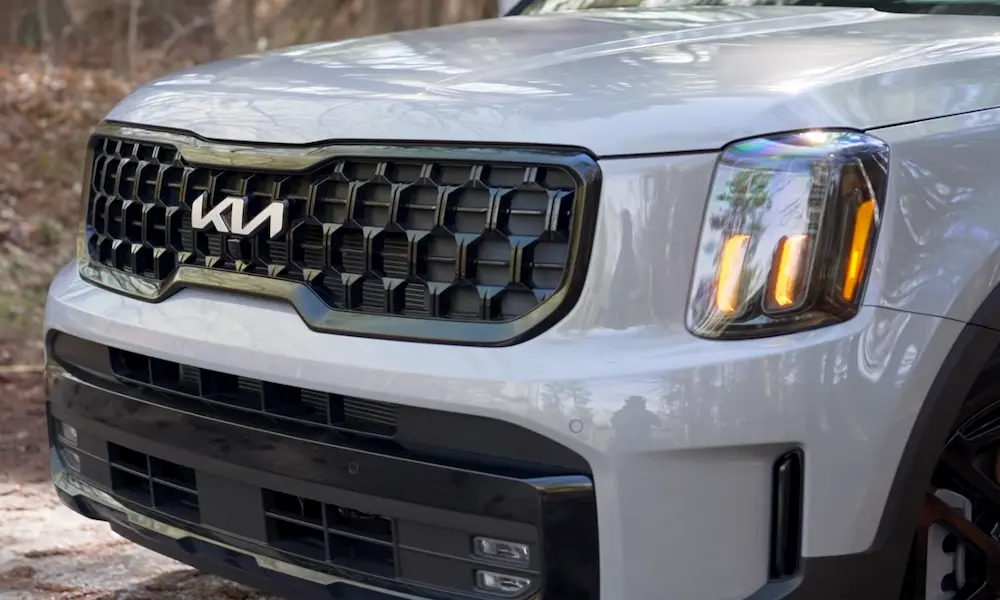Encountering a “Check AEB System” warning in your Kia vehicle can initially be concerning. Your car is equipped with Autonomous Emergency Braking (AEB), a safety feature that helps prevent accidents by automatically applying the brakes in critical situations. If this message appears, it indicates that the system has detected a fault or obstruction that could compromise its functionality.
It’s important for your safety to address this alert promptly. Common triggers involve obstructions to sensors, such as mud or snow, or software issues that may require professional diagnosis and service. To maintain the protective benefit of your AEB system, consider scheduling a check-up with an authorized Kia service provider.
Common AEB System Messages and Warnings
Your Kia’s Autonomous Emergency Braking (AEB) system is designed to enhance your safety on the road. When warnings such as “Check AEB System” display, your car is alerting you to potential issues that need attention.
Interpreting the ‘Check AEB System’ Warning
If your Kia’s dashboard shows a “Check AEB System” message, it indicates that the system has detected a malfunction or an issue with its operational components. This message serves as an immediate prompt for you to investigate the status of your AEB system. While it could be a simple sensor blockage, it could also be signaling a more serious hardware malfunction.
Response to AEB Warning Lights
When the AEB warning light illuminates on your dashboard, it’s important to take immediate action:
- Flashing Light: A flashing light often signifies an active intervention by the AEB system due to an imminent collision risk.
- Steady Light: If the light remains on, it points to a malfunction within the system. Performing a system check or seeking professional service is advised to ensure your safety systems are operational.
Other Related Warning Indicators
Your Kia may show additional warning indicators related to the AEB system:
- ABS Warning Light: Indicates potential issues with the Anti-lock Braking System, which can affect the AEB functionality.
- Check Engine Light: While not exclusively linked to the AEB system, this light can illuminate when there’s an underlying issue that could impact multiple safety features, including the AEB.
- Malfunction Indicator: This is a more generic warning that may light up when the AEB or other safety systems encounter an issue.
Recognizing these messages and responding appropriately ensures the continued effectiveness of your vehicle’s safety systems.
Step-by-Step Guide to AEB System Maintenance
Maintaining your Kia’s Autonomous Emergency Braking (AEB) system is crucial for ensuring it functions correctly and keeps you safe on the road. Let’s walk through the routine procedures, how to reset the system, and steps for sensor calibration.
Regular Maintenance Procedures
To keep your AEB system in good working order, regular maintenance is essential. Begin by:
- Inspecting the sensor: Check the AEB sensor located at the front of your vehicle for any obstructions like dirt, debris, or snow. Clean the sensor area gently with a soft cloth to avoid damage.
- Checking connections: Ensure all wiring and connections to the AEB system are secure and undamaged. Look out for any wear or corrosion that could affect performance.
Resetting the AEB System
Sometimes your AEB system may require a reset, especially if you’ve received a warning light on your dashboard suggesting a malfunction:
- Turn off your vehicle’s engine.
- Wait for a couple of minutes to ensure all systems have powered down.
- Restart your engine; the AEB system will perform a self-check, potentially clearing any temporary errors.
If the warning light remains, Kia’s troubleshooting advice suggests it’s time to consult a professional for further diagnosis.
Sensor Calibration
Proper sensor alignment is key to the AEB system’s accuracy. An incorrectly aligned sensor can cause the system to malfunction. The calibration process generally includes:
- Safety Precautions: Disconnect the battery to prevent any accidental electrical issues.
- Alignment: The AEB radar’s alignment may be adjusted by professionals with specialized equipment to ensure it’s correctly detecting obstacles.
- Testing: After any adjustments, testing the AEB system is crucial to confirm that the sensor is functioning and accurately responding to potential hazards.
Remember, while basic maintenance like cleaning can be done at home, recalibration and repairs should be handled by a certified technician. Regular checks and proper maintenance of your Kia’s AEB system will contribute to a safer driving experience.
AEB System in Different Conditions
Your Kia’s Autonomous Emergency Braking (AEB) system is designed to help keep you safe on the road, but its performance can vary with different environmental and road conditions. Grasping how it operates in these scenarios ensures that you can rely on it when you need to.
AEB Functionality in Adverse Weather
In adverse weather conditions such as heavy rain, snow, or fog, the AEB system’s sensors can be obstructed, limiting effectiveness. For instance, snow can cover sensors, leading to alerts like “AEB Disabled, Radar Blocked” as experienced by some Kia drivers. It’s imperative to keep your sensors clean and be aware that the system might not function optimally in poor visibility.
Handling AEB in Varied Road Conditions
When navigating through varied road conditions, the AEB can be a lifesaver. However, it’s crucial to keep an eye on the road conditions as well as the system’s feedback. On slippery or uneven roads, the AEB system may engage differently. While in reverse, be mindful that some AEB systems may not provide automatic braking, necessitating a more vigilant approach to relying on your manual braking system. Always ensure you maintain control and do not solely rely on technology to perceive hazards.
AEB System Parts and Repair
When the “Check AEB System” warning illuminates, it points to potential issues with the Advanced Emergency Braking system in your vehicle. Focus often centers on two main areas: the front bumper where the radar sensor is housed, and the bumper cover that protects the AEB sensors.
Front Bumper and Radar Sensor
Your Kia’s AEB system relies heavily on a radar sensor typically located behind the front bumper. Any damage or misalignment to this sensor can cause AEB system warnings. For basic troubleshooting:
- Check the plastic grill and the area around the front bumper for obstructions.
- Clean any dirt or debris that might block the radar’s line of sight.
Remember, if repairs are needed, consult with a professional as the radar sensors require precise calibration. You might find detailed guides on removing the front bumper cover to access the radar sensor for a better inspection.
Bumper Cover and AEB Sensors
The bumper cover, while primarily cosmetic, plays a role in protecting the AEB sensors from environmental hazards and routine wear. For maintenance:
- Inspect the bumper cover for any damage that could affect the sensors.
- Ensure the cover does not have built-up grime or dirt that may impede sensor performance.
When cleaning sensors, use appropriate equipment and techniques to avoid sensor damage. Should you need guidance, instructions for checking and caring for the AEB system are available, which highlight the importance of keeping the sensors unobstructed.














